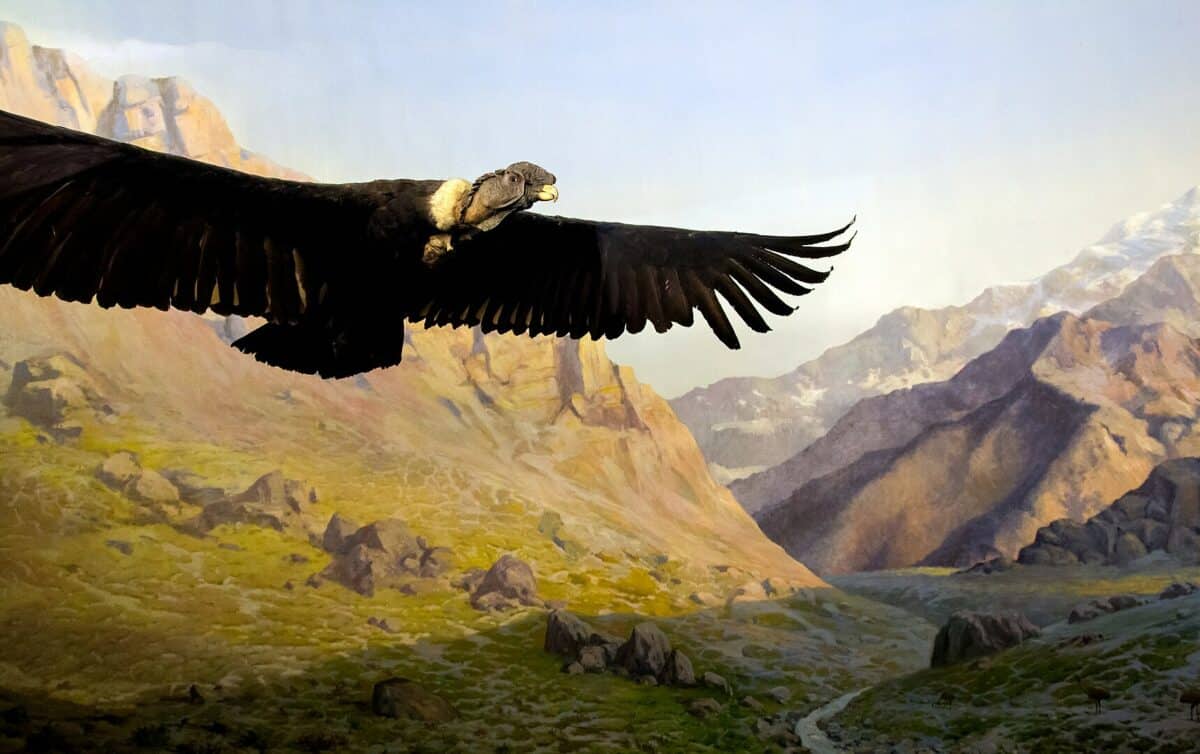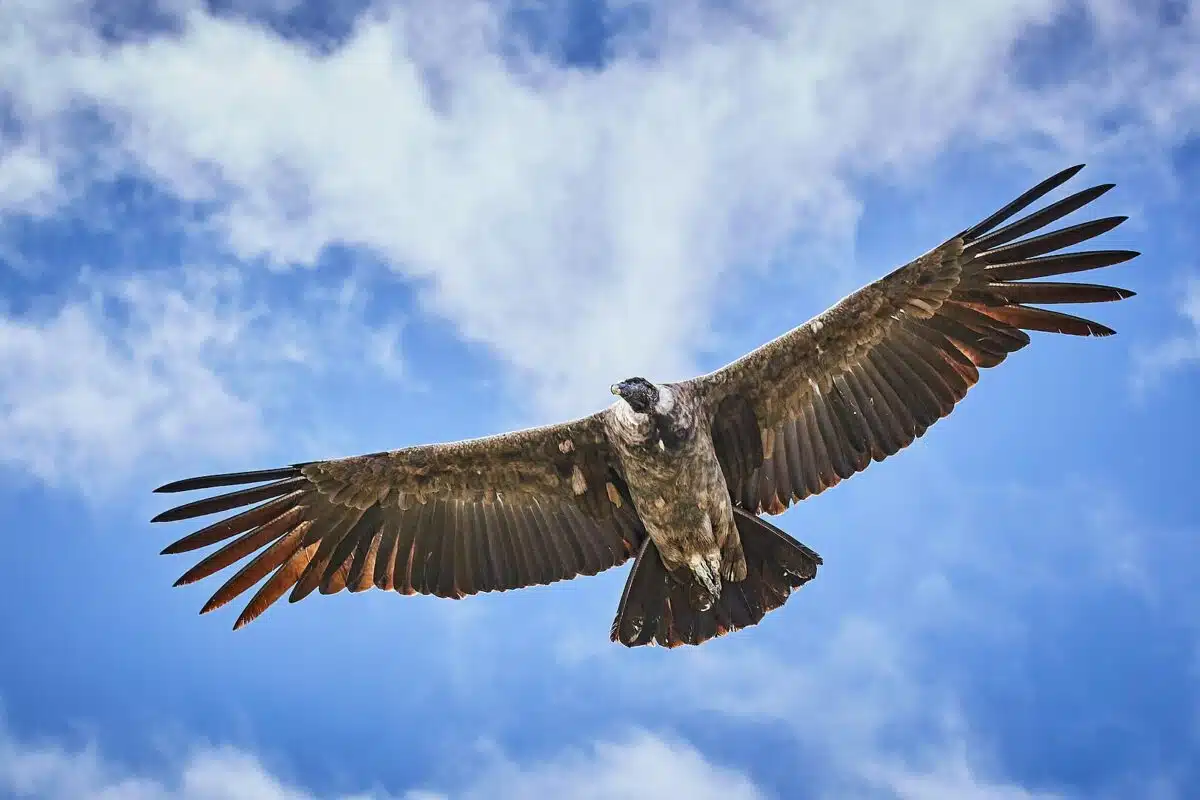The Andean Condor (Vultur gryphus) is a magnificent bird that reigns over the Andes Mountains. This bird, often referred to as the king of the Andes, is not only one of the largest flying birds in the world but also a symbol of power and freedom in South American culture. Its impressive wingspan, which can reach up to 10.5 feet, and its ability to soar at high altitudes make it a remarkable sight in the sky.

The Andean Condor’s Habitat and Adaptation
The Andean Condor thrives in the harsh conditions of the Andes Mountains, which stretch along the western edge of South America. This mountain range, known for its rugged terrain and extreme weather conditions, provides an ideal habitat for the condor. The bird’s large wingspan and powerful flight muscles allow it to glide effortlessly on thermal air currents, conserving energy as it searches for food. The condor’s featherless head is an adaptation for feeding on carrion, as it prevents feathers from becoming soiled during feeding.
Diet and Scavenging Habits
As a scavenger, the Andean Condor plays a crucial role in its ecosystem by consuming dead animals. This diet helps prevent the spread of diseases and keeps the environment clean. The condor’s sharp eyesight enables it to spot carcasses from great distances. It prefers to feed on large animals such as deer, cattle, and llamas but will also consume smaller prey when available.
Breeding and Conservation
The Andean Condor reaches sexual maturity at around five to six years of age and mates for life. Breeding pairs produce only one offspring every other year, making their reproductive rate relatively low. Both parents share the responsibility of incubating the egg and caring for the chick. The Andean Condor is currently classified as vulnerable due to habitat loss, poisoning, and hunting threats. Conservation efforts, including captive breeding and reintroduction programs, are underway to help stabilize and increase its population.
Cultural Significance
The Andean Condor holds a special place in the folklore and mythology of the Andean regions. Many South American cultures consider it a symbol of power, health, and liberty. The bird is also featured in various forms of art and is a national symbol of countries like Bolivia, Chile, Colombia, Ecuador, and Peru.
Conclusion
With its majestic presence and significant ecological and cultural importance, the Andean Condor is a true king of the Andes. Its survival is crucial for the health of the mountain ecosystems and the cultural heritage of the people who revere it. Continued conservation efforts are essential to ensure that this magnificent bird continues to soar over the Andes for generations to come.
You might also enjoy:
Discover the Most Social and Communicative Bird Species
Lions vs. Croc: Watch These Apex Predators Clash in a Fierce Battle
Scientists Have 20-Minute Conversation With Humpback Whale
Join our Forum for free today!

- The Bond Between a Wild Baby Bison and Her Rescuer - July 20, 2024
- An Excited Husky’s First Ever Time in Snow - July 20, 2024
- Top 20 Colorful Species To Brighten Your Day - July 14, 2024


